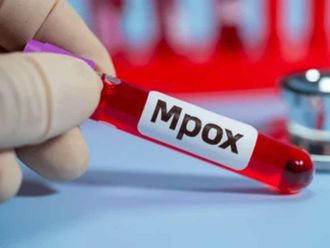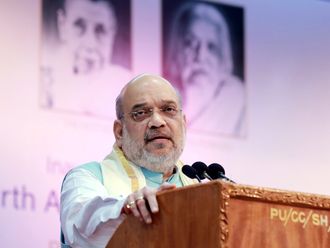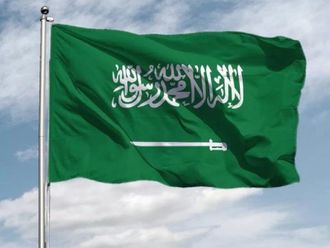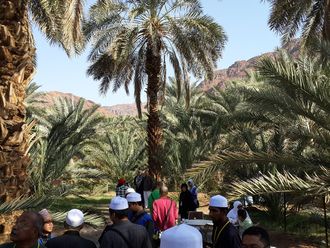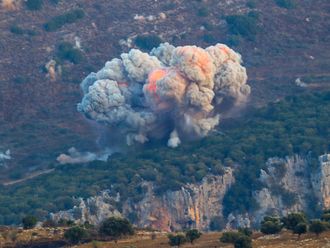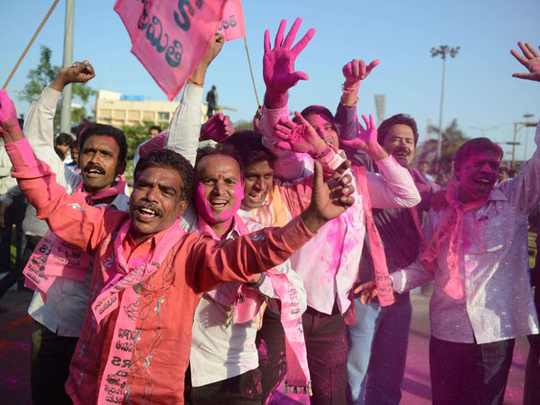
Hyderabad: Telangana, the 29th state of India, is the result of nearly six decades of struggle by the people of the region.
Telangana is a land with a distinct language and a composite culture evolved over centuries of interaction between people of different languages, cultures, faiths and traditions.
It was one of the several regions that made the erstwhile Asif Jahi Kingdom of Nizams, popularly known as Hyderabad.
More than a year after India’s independence from British rule in August 1947, the Indian government launched a military operation against a defiant Hyderabad and annexed it.
After the bloody Police Action in September 1948, Hyderabad was broken into three parts. Marahati-speaking areas of the Nizam state, including the city of Aurangabad, were handed over to Maharashtra, and Kannada-speaking areas, including the districts of Bidar and Gulrbarga, were merged with Karanataka.
Telugu-speaking areas known as Telangana became a separate state and it was initially called Hyderabad.
After a prolonged agitation by the people of Telugu-speaking areas of the Madras Presidency, coastal Andhra was separated into another state. Subsequently, these areas started agitating for the merger of Telangana to make a single state for the Telugu people.
During the process of reorganisation of Indian states on a linguistic basis, the government of India agreed to a merger of Telangana, Andhra and Rayalaseema (known as Circar region).
Though the Telangana people strongly opposed the merger fearing that they would be subjected to the hegemony of the Andhras, even with the Justice Fazal Ali Commission also recommending against the merger, Jawaharlal Nehru’s government decided to go ahead with merger.
After almost six years, Telangana state ceased to exist when the state of Andhra Pradesh was formed on November 1, 1956.
This marked the beginning of dramatic changes in the demographic, linguistic and cultural makeup of Hyderabad and other parts of Telangana. With Telugu replacing Urdu as the official language, the purging of the Muslim minority from government services and the migration of the noble class to Pakistan, people from Andhra flooded Hyderabad.
As these people were better educated than the relatively poor Telangana people, Andhras started getting preferences in jobs, higher educational institutions and other economic opportunities.
Capping all this was the complete political domination of Andhras as Andhra and Rayalaseema commanded the majority in the state assembly.
The situation remained the same even after a Gentlemen’s agreement was worked out by the Centre. Much to the chagrin of the Telangana people, they found Andhra rulers diverting their resources, including river waters for the benefit of the Andhra region.
Thus, within a few years of the formation of Andhra Pradesh, the demand for the restoration of Telangana state began.
As the grievances over injustices grew louder, the state witnessed a violent agitation for a separate Telangana in 1969, spearheaded by Telangana Praja Samiti. More than 350 students and youth were killed in police firing as the government unleashed a reign of terror to crush the “Jai Telangana movement”.
In 1972, on the other hand, a “Jai Andhra” movement began in the other region with some people demanding a separate Andhra state.
Amid the political turmoil, general elections were swept by Marri Channa Reddy’s TPS and it won 13 Lok Sabha seats.
Instead of using this political power for achieving Telangana, Channa Reddy merged his party with the Congress of Indira Gandhi and became governor of Uttar Pradesh.
Indira, who was against Telangana manipulated the situation in her favour and the Telangana people were betrayed by a leader in whom they had bestowed their faith.
In 1975, Indira’s government worked out a six-point formula to safeguard the interest of the Telangana people, especially in government jobs. But using their political clout, the Andhra people continued to take over government jobs in Telangana.
As Telangana became a hotbed of left-wing extremism and armed struggle, the government used brutal police force to crush any movement.
Thus, for the next two decades there was nobody to take forward the Telangana cause and people gave up hope of getting back their state.
However, in 2000, two developments took place seeding the plant for Telangana.
As Congress was completely marginalised and the Telugu Desam government headed by N Chandrababu Naidu looked set for a very long era, then Congress legislature party leader YS Rajasekhar Reddy raised the demand for a separate Telangana state from a back door.
He mobilised 41 Telangana Congress legislators to sign a memorandum addressed to the Congress President Sonia Gandhi demanding a separate Telangana state. It became the basis for the Congress Working Committee passing a resolution that the party would respect the sentiments of Telangana people.
The second development appeared less significant at the time. Chandrababu Naidu dropped a key Telangana leader of his party K Chandrashekhar Rao from his cabinet and gave him the insignificant position of deputy Speaker. Unable to bear the slight, Rao quit the assembly as well as the TDP and declared that he was going to revive the struggle for Telangana state to fight against injustice in the region.
Many, including Chandrababu Naidu, dismissed his move as “opportunistic”.
When KCR, as Chandrashekhar Rao became popularly known, launched a new regional party Telangana Rashtra Samiti in 2001, Naidu ridiculed it as “one-election party” and said people will not remember the party after some time.
But this proved to be a turning point as KCR painstakingly developed the party brick by brick into a solid political force.
Known for his political manoeuvring and strategising, KCR entered into an electoral alliance with Congress in 2004 and joined the governments both in the state and at the Centre.
But he walked out when realised Congress was dragging its feet. By the 2009 elections, the situation had changed and TRS had an election alliance with the bete noire Telugu Desam party.
As in both the elections, TRS failed to emerge as a decisive political force and KCR could not drive home the advantage and force the Central government’s hands.
However, in September 2009, when YS Rajasekhar Reddy died in an plane crash, the biggest block in the way of Telangana was removed. KCR went on an indefinite hunger strike creating a nation-wide stir and Centre was forced to announce that it was initiating the process of Telangana formation.
Subsequently, through the mobilisation of people under the banner of a non-political movement of the Telangana Joint Action Committee, he developed enough momentum to force the Telangana legislators and MPs of Congress and TDP to quit their parties and join TRS. The party won almost every single election in the region from 2009 till 2013.
A crippling indefinite strike by the government employees in Telangana also added fuel to the fire.
The main opposition party at the national level BJP also came out openly in support of Telangana. The state opposition party Telegu Desam also wrote to Centre that it did not have any objection to Telangana.
Though the Srikrishan committee set up by Centre in 2010 opposed Telangana, the series of general strikes, agitations and political setbacks forced the Congress-led UPA government to finally take a call.
On July 30, 2013, the Congress Working Committee and UPA coordination committee passed a resolution in favour of Telangana. It was followed by a similar decision by the Union Cabinet.
It brought cheers to Telangana but triggered a new round of protest and agitation in the Seemandhra region.
Chief Minister N Kiran Kumar Reddy also joined the protest and many legislators and MPs started resigning from the party.
Undeterred by all this, Congress President Sonia Gandhi decided to press ahead with the process. After the Group of Ministers completed the consultations with all the stakeholders, the Union government prepared a draft State Reorganisation Bill.
Though Seemandhra legislators, who had a majority in the assembly rejected it, the Lok Sabha passed it on February 18 and Rajya Sabha passed it on February 20.
Now, it is awaiting the assent of President Pranab Mukherjee after which an “Appointed Day” will be fixed for the inauguration of the state.


